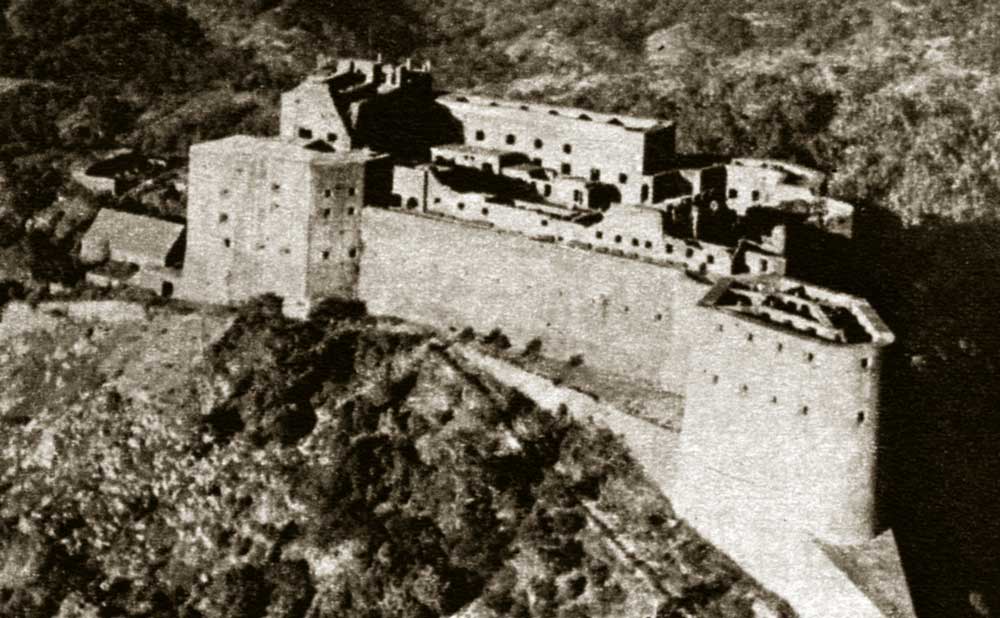No Silver Bullet
The extraordinary life of Henry Christophe, King of Haiti from 1811 to 1820.

The life of Henry Christophe – King of Haiti from 1811 until his death in 1820 – is crying out for a modern dramatisation. It follows a steep and spectacular arc, intersecting with explosive historical events. Paul Clammer brings this extraordinary story to life in his deeply researched biography of Christophe, the first to appear in decades. Clammer, who has lived in Haiti, has been in conversation about this project for years with scholars of the island (full disclosure: I am one of them). He has been doggedly chipping away in his search for sources and the result is a detailed and rewarding read.
As with so many people born into slavery, there is a scant paper trail of Christophe’s early life. It is generally accepted that he was not from the French colony of Saint-Domingue that he would help liberate, but instead the island of Grenada, then a British colony. It is thought that French troops took him to Saint-Domingue after the Battle of Grenada in 1779. From there the young Henry found himself en route to the British colony of Georgia with the Chasseurs Volontaires, a regiment of 550 free black soldiers from Saint-Domingue, who aided the patriot rebels in the American Revolutionary War. Afterwards, he returned to Saint-Domingue, to the bustling northern port city of Cap Français (today’s Cap-Haïtien). It is unclear when exactly he obtained his freedom, but by the time the French Revolution of 1789 began to spill into the colony, he was working at an inn auspiciously named the Couronne (crown).
In August 1791, the profitable sugar cane fields in the north of the island went up in flames. This was the opening shot of what would be called the Haitian Revolution, with an estimated 80,000 enslaved people – out of a total slave population of 500,000 – in revolt in the north within a matter of months.
As this conflict spread, Christophe ended up under the command of the famed general Toussaint Louverture. Clammer diligently follows Christophe through the battles of this complex period, both military and political. Louverture was imprisoned and died in France in 1803, as Napoleon Bonaparte attempted to regain control over the colony. When it was clear that France was going to restore slavery, which it had abolished in 1794, Christophe, along with general Jean-Jacques Dessalines, led the island into full independence as Haiti in 1804.
Dessalines presided in the aftermath, issuing a constitution in 1805. He crowned himself emperor the following year, but his enemies soon turned on him and he was killed. This led to a short civil war that resulted in a long animosity between Christophe and Alexandre Pétion, a general who had established a republic in the south.
Christophe decided to crown himself king in 1811 and he created a hereditary nobility and a 750-page legal code. At his coronation banquet, Christophe toasted the British monarch, saying ‘To my brother, King George III – may the Lord Creator preserve him, that he may remain an invincible obstacle to the ambitions of Napoleon, and always a constant friend of Haiti!’
One particularly fascinating aspect of this book is Christophe’s relationship with Britain. As king he corresponded with a range of Britons – naval captains, merchants and abolitionists like William Wilberforce. A portrait of Christophe by the artist Richard Evans hung in the Royal Academy in 1818 to some acclaim.
Christophe understood that freedom for the former slave colony came at a high price, and he needed to find a way to pay it. His method was to coerce now free people to work in the sugar fields and on coffee plantations by offering a share of the profits. This functioned for a time, until everything spiralled into collapse. Unhappy workers fled the plantations and in 1820 Christophe suffered a stroke. He lived a few more months to watch his kingdom crumble and his enemies circle, before shooting himself in October 1820, allegedly with a silver bullet. His son was killed in the aftermath, while the queen and two princesses lived out the duration of their exile in Europe, including time in Britain.
History has not been particularly kind to Christophe. He was well known enough in his time – in part thanks to the fascination of the British press – that London theatre-goers flocked to The Death of Christophe – King of Hayti when it was first staged in 1821 and again in 1825. In the years that followed, he faded into obscurity.
Christophe remains a hero of sorts in Haiti, but is positioned below Louverture and Dessalines. However, his footprints can be traced, not least at the massive Citadelle fort built under his watch, or amid the ruins of his three-storey Sans Souci palace. He was a complex figure and, as Clammer concludes, ‘the paradoxes of his rule deserve to be better remembered’.
Black Crown: Henry Christophe, the Haitian Revolution and the Caribbean’s Forgotten Kingdom
Paul Clammer
Hurst 392pp £25
Buy from bookshop.org (affiliate link)
Carrie Gibson is the author of El Norte: The Epic and Forgotten Story of Hispanic North America (Atlantic, 2020).